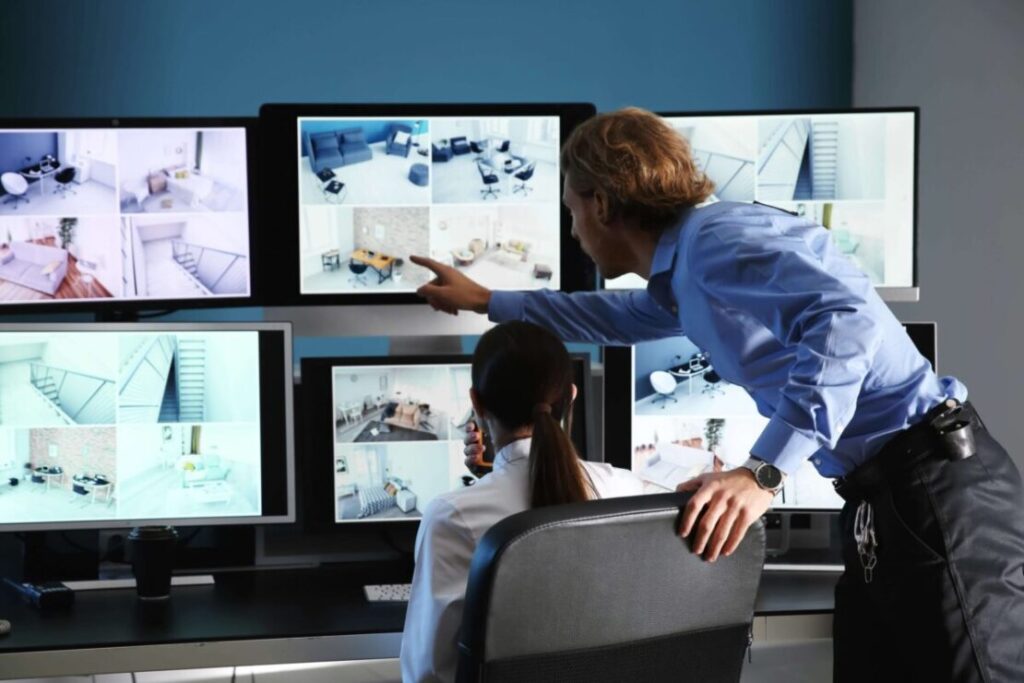Security cameras have come a long way. Businesses no longer rely on grainy footage stored on local hard drives. Thanks to remote monitoring, you can now monitor your business from anywhere using CCTV security cameras. Whether you’re at home, traveling, or managing multiple locations, remote access lets you monitor live footage, review recordings, and control camera settings, all from your phone or computer.
If you’re considering commercial security cameras for your business, knowing how to use them effectively for remote monitoring and management is important. Here’s a breakdown of how these systems work, why they’re useful, and what you need to start.
Choose the Right Commercial Security Cameras for Remote Access
Not all cameras support remote access. If you want to monitor your business remotely, you need cameras that support remote access features. Look for commercial security cameras with:
- Internet Connectivity: Cameras that connect to Wi-Fi or Ethernet allow you to access live footage from anywhere using a smartphone, tablet, or computer.
- Mobile Apps: Many modern cameras come with dedicated apps that let you view footage, receive alerts, and control camera settings remotely.
- Motion Detection and Alerts: Cameras with motion detection can alert your phone when activity is detected. This helps you respond quickly to suspicious behavior without constantly watching live feeds.
- Cloud or Network Video Recorder (NVR) Storage: For remote access, you need a system that stores footage in the cloud or an NVR that can be accessed over the internet. Cloud-based systems allow you to review footage from anywhere, while NVR-based systems require a secure connection to your network.
- Remote Pan, Tilt, and Zoom (PTZ): PTZ cameras let you adjust the angle and zoom in on specific areas remotely. This is useful for monitoring large spaces like warehouses, parking lots, or retail stores.
- High-Quality Video and Night Vision: Clear footage is crucial for identifying people and events. Choose cameras with at least 1080p resolution and infrared (IR) night vision for visibility in low-light conditions.
Set Up a Centralized Monitoring System
Remote monitoring becomes much easier when you have a centralized system to manage all your security cameras. This is especially useful for businesses with multiple locations or large premises. Here’s how to set it up:
Step 1: Connect the Cameras to the Internet
- For Wi-Fi cameras, connect them to your business’s wireless network.
- For wired cameras, use an Ethernet cable for a stable connection.
- Ensure your internet speed is fast enough to handle live streaming and cloud uploads.
Step 2: Install the Manufacturer’s App or Software
- Most security cameras come with a companion app for remote access.
- Download the app on your smartphone or log in to the web portal on a computer.
- Follow the setup instructions to pair your cameras with your account.
Step 3: Configure Alerts and Notifications
- Enable motion detection and customize alert settings.
- Set up email or push notifications for suspicious activity.
- Adjust sensitivity levels to avoid false alarms from minor movements like tree branches swaying.
Step 4: Secure Your Remote Access
- Use strong, unique passwords for your security system.
- Enable two-factor authentication (2FA) if available.
- Regularly update the firmware to patch security vulnerabilities.
Enable Real-Time Alerts and Notifications
One of the biggest advantages of CCTV security cameras is their ability to send real-time alerts. These notifications inform you about what’s happening at your business, even when you’re not there. Here’s how to make the most of this feature:
- Motion Detection: Set up your cameras to alert when motion is detected in specific areas. For example, if you own a warehouse, you can receive alerts if someone enters a restricted zone after hours.
- Sound Detection: Some cameras can detect unusual sounds, like breaking glass or alarms, and notify you immediately.
- Customizable Alerts: Adjust the sensitivity of alerts to avoid being overwhelmed by false alarms. For instance, you can set the camera to ignore small movements like pets or swaying trees.
Imagine you’re on vacation, and you receive a motion alert from your store. You open the app, check the live feed, and see a delivery person dropping off a package. With real-time alerts, you’re always in the loop.
Conclusion
Security cameras are no longer just tools for recording footage; they’re powerful devices that allow you to monitor and manage your business remotely. By choosing the right CCTV security cameras, setting up a centralized system, enabling real-time alerts, and integrating with other security measures, you can stay connected to your business 24/7. Be it at home, on vacation, or in a meeting; remote monitoring gives you peace of mind and the ability to act quickly when needed.


